There's a Problem with This Drive
Featured Articles
- 01 You Must Initialize a Disk Before Logical Disk Manager Can Access It
- 02 Location Is Not Available
- 03 Drive Access Denied
- 04 Cannot Open Volume for Direct Access
- 05 The Disk Structure Is Corrupted and Unreadable
- 06 Data Error Cyclic Redundancy Check
- 07 Hard Drive Showing as Unknown Device
- 08 SamSung 870 Evo Not Detected Windows 10
- 09 Maxtor Hard Drive Not Working
What is "HDD unknown device"? An "HDD Unknown Device" error in Windows indicates that the operating system cannot identify a connected hard drive, typically due to missing or outdated drivers, or potentially a physical issue with the drive itself. This can manifest as the drive not showing up in File Explorer or appearing as "Unknown" in Device Manager.
This page will discuss four effective ways to solve the "HDD unknown device" issue. And also provide powerful hard drive recovery software to recover inaccessible data.
| Workable Solutions | Step-by-step Troubleshooting |
|---|---|
| Fix 1. Disable USB selective suspend | Open Control Panel, click "Power Options", and click "Change plan settings...Full steps |
| Fix 2. Uninstall or update driver | In Device Manager, find and uninstall "Unknown device"...Full steps |
| Fix 3. Reinstall USB controllers | In Device Manager, expand and uninstall "Universal Serial Bus Controllers"...Full steps |
| Fix 4. Update chipset drivers | Find the name of your computer motherboard, visit the manufacturer's site...Full steps |
Don't forget to 👉Recover Data from HDD Unknown Device first using trusted data recovery software, so you can repair the "HDD unknown device" issue without worrying about losing data.
Why Is My Hard Drive Showing Up as Unknown
An unknown device is a device name listed in the Windows Device Manager for any device that Windows is unable to identify or for which it does not have the drivers used to identify the device.
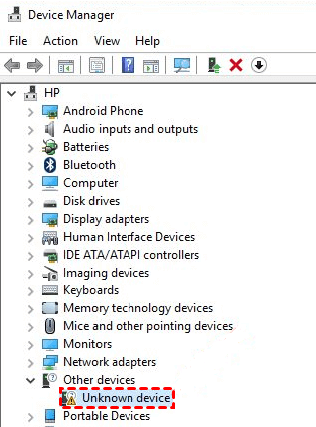
Literally, the HDD/SSD/USB "Unknown Device" in Device Manager displays itself as disk unknown not initialized in Disk Management. When Windows recognized a storage device in this way, it was neither readable nor accessible, along with all the data.
I have tried connecting other saga cables and checked to make sure everything is plugged in snugly...In Device Management, it shows up as an unknown device, but no information as to the size, etc. It does say healthy and the only thing I can find is in properties > events >device not migrated. - Learn.Microsoft.com
"Unknown device" is a common issue that happens to a lot of users, and the following reasons may account for the problem:
- Insufficient power supply because USB selective suspend setting is enabled.
- Driver issues associated with the currently loaded internal/external storage drive, USB controllers, or the computer motherboard.
In fact, the "Unknown Device" is a very common error that most of us would face once or twice, so you are not alone. No matter it is an internal hard drive, HDD, SSD, or an external USB flash drive, follow the advice of troubleshooting, and you will hopefully get over with it.
Fix 1. Disable USB Selective Suspend Setting
Step 1. In Windows 10/8.1/8/7, press Windows + R keys to bring up the Run box, type control, and hit enter. The Windows Control Panel is open.
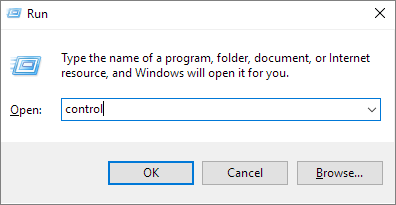
Step 2. Find "Power Options" and click it.
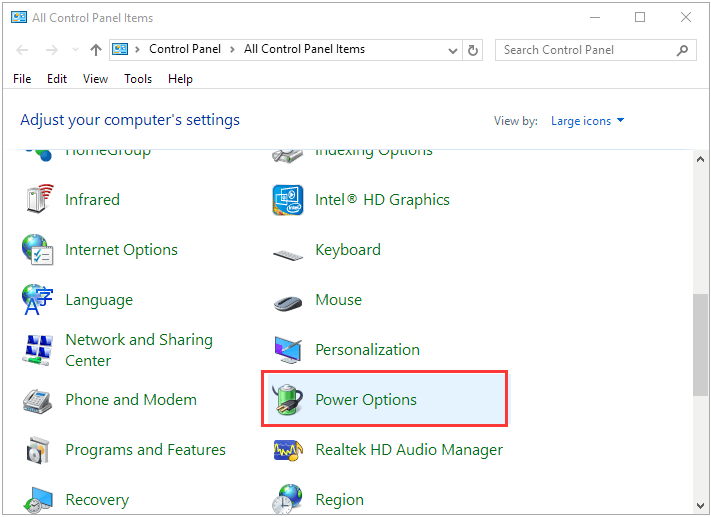
Step 3. In your own power plan, click "Change plan settings".
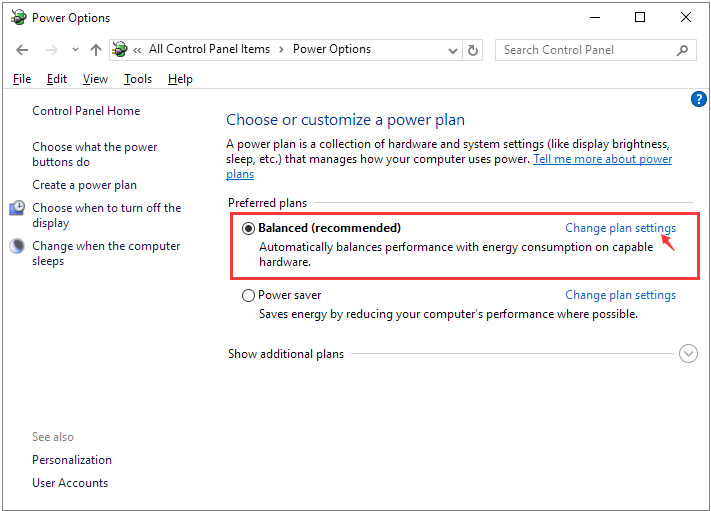
Step 4. Click "Change advanced power settings".
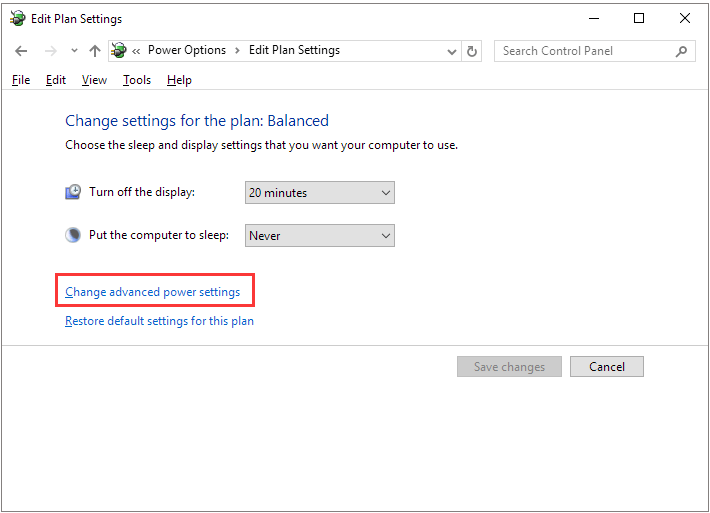
Step 5. Expand "USB settings" and then "USB selective suspend setting", click the "Setting" and turn the default "Enabled" to "Disabled".
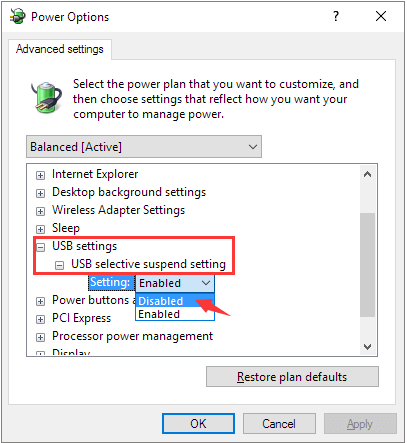
Step 6. Click "Apply" to save changes.
Share this post with your friends on SNS, and help more people learn hwo to fix the "HDD unknown device" error.
Fix 2. Uninstall and Update the Hard Drive Driver
Step 1: In Device Manager, navigate to the hard drive showing "Unknown device" (Usually it's under "Other device").

Step 2. Right-click on it and choose "Uninstall".
Step 3. After the hard drive is uninstalled, unplug the external drive.
Step 4. After a while, reconnect it to the computer.
Step 5. Windows will automatically install and load the driver this time. Go to check if the USB drive shows up in Windows Explorer.
Fix 3. Reinstall USB controllers
Step 1. In Device Manager, expand "Universal Serial Bus Controllers".
Step 2. Right-click on the unknown USB Device and select "Uninstall". Wait until it completes.
Step 3. Restart your computer. The USB controllers will automatically install. Go to check if the USB drive shows up in Windows Explorer.
Fix 4. Update the Motherboard Chipset Drivers
Step 1. In your computer's documentation, find the name of the motherboard manufacturer. It's important for you to search for a matched driver.
Step 2. Visit the manufacturer's support website and find the appropriate driver for your motherboard. You can also reach a support guy for further help.
How to Recover Data from HDD Unknown Device
To restore data from the unknown device, you have two choices. One, fix the unknown device so that Windows can read it again, as the above part taught. Two, send the disk drive to nearby data recovery companies, let the professionals do a manual hard drive data recovery.
To recover data from a hard drive, EaseUS Data Recovery Wizard can help. It is dependable, powerful, and easy-to-use data recovery software that is worth a try.
EaseUS data recovery software is popular for the following features:
- recover deleted files from Recycle Bin, HDD, SSD, USB, pen drive, SD card, external hard drive, and more
- Restore more than 1000 types of files, including photos, videos, documents, emails, etc.
- Repair corrupted files during data recovery on Windows 11/10/8/7
When you lost access to a local hard drive or an external USB drive, do not hesitate to run the software to scan and display all the hard drive data for you. The overall steps are as follows.
Step 1. Scan the SSD
Open EaseUS Data Recovery Wizard, select the SSD where you lost data, and click the "Search for Lost Data" button.
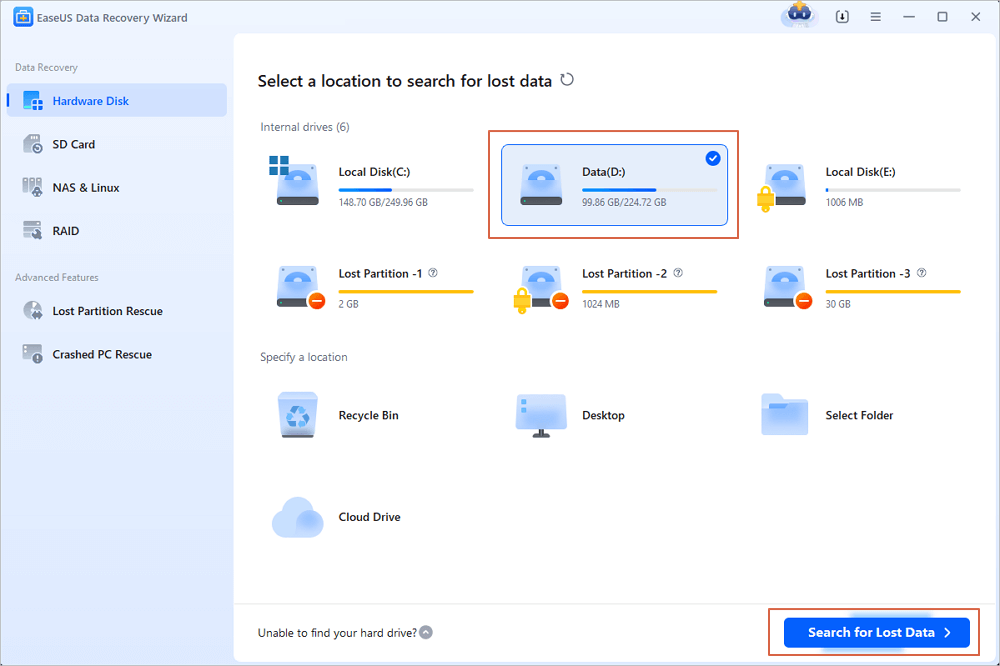
Step 2. View the results
When the scanning finishes, find lost SSD data by using the "Filter" and "Search" options after checking the "Deleted Files" and "Other Lost Files" folders.
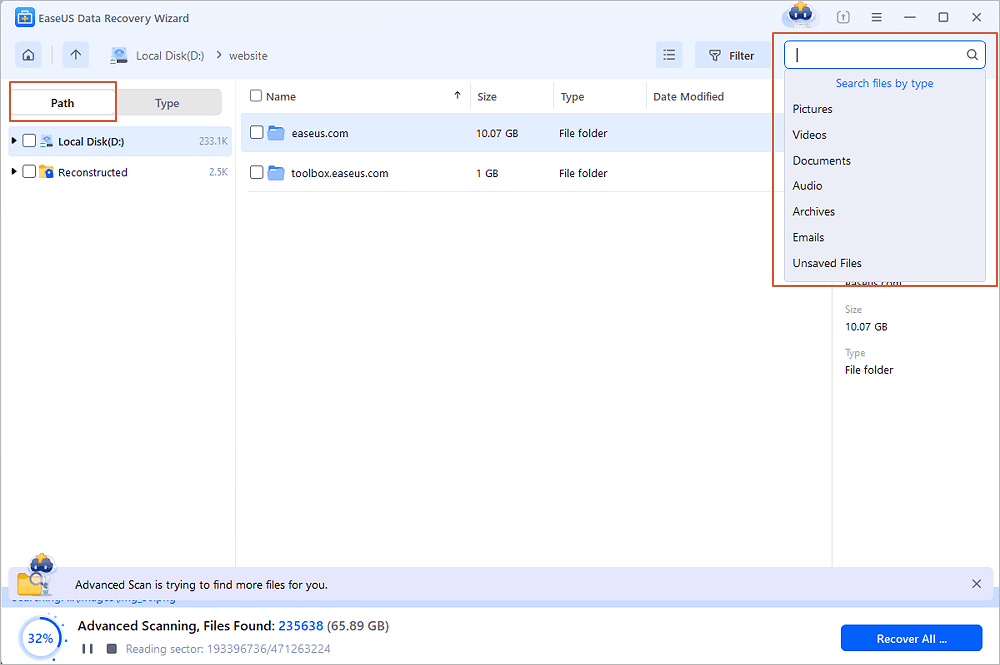
Step 3. Recover SSD files
Select desired data and click the "Recover" button to get back lost SSD files.
💡Tip: You can restore data on the local disks, external hard drives, and also the cloud storage.
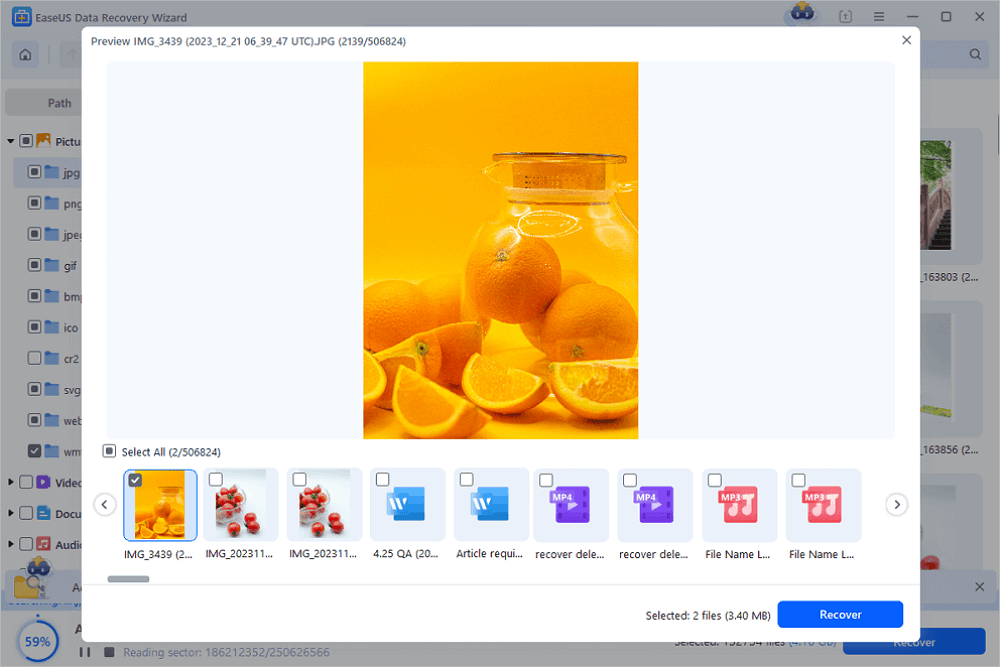
Here's a video about how to fix SSD not showing up. You can check and learn more:
⌛Time Stamps:
- 00:15 Method 1. Assign Drive Letter
- 01:05 Method 2. Initialize Disk
- 01:35 Method 3. Corrupted File System
- 02:38 Method 4. Windows Driver Issue

HDD Unknown Device FAQs
1. How to fix a hard drive unknown device?
Follow these steps to fix a hard drive showing "unknown device":
Step 1. In Device Manager, expand "Universal Serial Bus Controllers".
Step 2. Right-click on the unknown USB Device and select "Uninstall". Wait until it completes.
Step 3. Restart your computer. The USB controllers will automatically install. Go to check if the USB drive shows up in Windows Explorer.
2. Why is my hard drive showing up as unknown?
Incorrectly connecting the drive to your system. Data corruption in the hard drive may cause it to be shown as Unknown. The currently loaded driver for the external drive has become unstable or corrupted. Your external drive may be entering selective suspend.
3. How to fix HDD not being detected?
If a hard drive is not detected by your computer, start by checking the physical connections and power supply, then try updating or reinstalling drivers, and finally, use Disk Management and CHKDSK to troubleshoot. If those steps don't resolve the issue, consider professional data recovery services.
4. How to get rid of an unknown device?
To remove an unknown device, open Device Manager and locate the device with no name or a yellow warning icon. Right-click it and select "Uninstall device". If it reappears after reboot, update your drivers or run a malware scan, as some software can add virtual devices.
Was This Page Helpful?
Brithny is a technology enthusiast, aiming to make readers' tech lives easy and enjoyable. She loves exploring new technologies and writing technical how-to tips. In her spare time, she loves sharing things about her game experience on Facebook or Twitter.
Jean is recognized as one of the most professional writers in EaseUS. She has kept improving her writing skills over the past 10 years and helped millions of her readers solve their tech problems on PC, Mac, and iOS devices.
Related Articles
-
Run Disk Clone Windows 11 and Windows 10 with EaseUS Disk Copy
![author icon]() Tracy King/Dec 31, 2025
Tracy King/Dec 31, 2025 -
How to Clone External Hard Drive to Internal (No Data Loss)
![author icon]() Larissa/Jan 05, 2026
Larissa/Jan 05, 2026 -
How to Change Default Drive Windows 10 Easily & Quickly
![author icon]() Jerry/Dec 31, 2025
Jerry/Dec 31, 2025 -
How to upgrade Hard Drive to a Larger Disk (Clone Windows & Data Safely)
![author icon]() Daisy/Jan 05, 2026
Daisy/Jan 05, 2026
